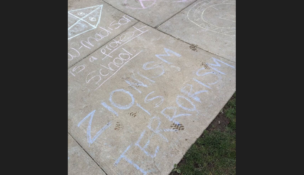US justices look for limits in bank fraud case
By: KIMBERLY ATKINS, BridgeTower Media Newswires//April 2, 2014//
US justices look for limits in bank fraud case
By: KIMBERLY ATKINS, BridgeTower Media Newswires//April 2, 2014//
Expressing an unwillingness to dramatically expand the scope of offenses that fall under the federal bank fraud statute, the justices of the U.S. Supreme Court searched for some type of limiting principle this week during arguments in Loughrin v. U.S., 13-316.
The law provides a penalty of up to 30 years in prison and a $1 million fine for anyone who executes a scheme: “(1) to defraud a financial institution; or (2) to obtain any of the moneys, funds, credits, assets, securities, or other property owned by, or under the custody or control of, a financial institution, by means of false or fraudulent pretenses, representations, or promises.”
The vagueness of the second provision, §2, gave rise to the present case, which does not stem from an alleged scheme to steal directly from a bank but rather from a fraudulent spending spree at a Target retail store.
The two defendants in the case, Kevin Loughrin and a cohort, were accused of engaging in a three-month operation in which they obtained merchandise and cash from the store in a variety of ways, from picking up discarded store receipts, retrieving items matching those on the receipt from store shelves and then “returning” them for cash refunds to stealing and altering checks and using them to purchase goods from the store.
They were charged with multiple offenses, including six counts of bank fraud under §2 of the statute. The defendants sought a jury instruction requiring proof that that they intended to defraud a financial institution. Prosecutors objected, arguing that all that is required is proof of intent to defraud someone. The trial court sided with the government and the defendants were convicted.
The 10th U.S. Circuit Court of Appeals affirmed, citing its own precedent holding that §2 does not require that a bank be the intended target of the fraud, a ruling in line with decisions from the 6th, 9th and 11th Circuits. The 1st, 2nd, 3rd and 8th Circuits have concluded that intent to defraud a financial institution is required, and the Supreme Court took up the case to resolve the split.
Looking for limits
During Tuesday’s arguments, Loughrin’s attorney, Kevin Russell, a partner in the Washington office of Goldstein & Russell PC, urged the court to reject the government’s assertion that a financial institution need not be the intended victim of a scheme.
“Such a broad interpretation [would] sweep in a garden variety state law crime,” Russell said. “This Court has refused to give to federal criminal statutes [such breadth] absent a clear statement of congressional intent.”
As an example, Russell cited a 2nd Circuit case involving a bookkeeper who gave his employer false invoices, causing the employer to issue checks that were cashed by the bookkeeper’s third-party cohorts. Engaging in a scheme that happens to use a check in some way, he argued, isn’t enough.
Justice Samuel Alito Jr. pointed out a textual problem with the defendant’s argument: Congress usually doesn’t repeat itself.
“You run into the problem that your interpretation [of §2] makes §1 surplusage,” Alito noted. “How do you get around that?”
Anthony Yang, assistant to the U.S. solicitor general, argued that the statutory language supported the government’s view.
“The first clause targets schemes to defraud a bank. That requires intent of defrauding a bank,” Yang explained. “Clause two targets schemes to obtain property that’s either owned by or under the custody or control of a bank,” such as a check or bank card.
But the justices expressed concern about adopting such a broad view.
“If I understand your interpretation of the statute, if I sell a painting to somebody and I represent it to be by a famous artist and in fact I’ve just made it in my kitchen, and that person pays me with a check,” it’s federal bank fraud, said Justice Elena Kagan. “It has nothing to do with a bank.”
Yang said that was the correct interpretation “because Congress specified in [§2] that the scheme to obtain money or property from the bank has to be by means of a false or fraudulent pretense, but it doesn’t specify to whom that false or fraudulent pretense must be made.”
Several justices seemed inclined to favor the government’s fallback position: a requirement that the scheme involve false or fraudulent representations that would foreseeably be directed to a bank.
But while that would avoid giving the statute such a broad sweep that it would envelop many offenses usually left within the purview of state law, the government offered no statutory or caselaw authority on which to hang that option.
“Is there a case that you can cite to us that says we have a duty to save poorly drawn statutes by a sensible amendment?” asked Justice Anthony M. Kennedy.
“No,” Yang said. “[But] you could… read the statute as saying that Congress in §2 was concerned with the specific type of means” for perpetrating a fraud, such as stealing checks.
A decision is expected later this term. Follow @dcdicta
Legal News
- Court upholds Milwaukee police officer’s firing for posting racist memes
- FCC fines wireless carriers millions for sharing user locations without consent
- Wisconsin Supreme Court scheduled to hear oral arguments in absentee voting case
- Attorney General Kaul joins multistate coalition to defend U.S. EPA’s light-duty vehicle emission standards
- State Bar of Wisconsin names election winners
- Protests erupt on college campuses throughout Midwest, and U.S. over war in Gaza
- Newly filed report with federal court seeks Havana Syndrome transparency
- Questions of transparency, leadership responsibility linger over State Bar trust
- Firm demands $4.3M in dispute with Wisconsin client
- Chesebro among those charged with interfering in 2020 election
- FTC hits Williams-Sonoma with ‘record civil penalty’ for Made in America claims
- Harvey Weinstein due back in court, while a key witness weighs whether to testify at a retrial
WLJ People
- Power 30 Personal Injury Attorneys – Russell Nicolet
- Power 30 Personal Injury Attorneys – Benjamin Nicolet
- Power 30 Personal Injury Attorneys – Dustin T. Woehl
- Power 30 Personal Injury Attorneys – Katherine Metzger
- Power 30 Personal Injury Attorneys – Joseph Ryan
- Power 30 Personal Injury Attorneys – James M. Ryan
- Power 30 Personal Injury Attorneys – Dana Wachs
- Power 30 Personal Injury Attorneys – Mark L. Thomsen
- Power 30 Personal Injury Attorneys – Matthew Lein
- Power 30 Personal Injury Attorneys – Jeffrey A. Pitman
- Power 30 Personal Injury Attorneys – William Pemberton
- Power 30 Personal Injury Attorneys – Howard S. Sicula











